Is there anything that beats the fragrant scent of freshly baked croissants in the morning? We think not! That's why after our hugely successful low-fat sourdough croissant recipe, we bring you a new take on this most beloved treat: gluten-free croissants.
The best thing about our sourdough croissant recipe, apart from using delicious sourdough, is the lack of butter or other processed fats. By using a Chinese patisserie technique, we were able to get flaky croissants with a fraction of the fats of the classic pastry. If you are into low-fat recipes, check that out!
Today our objective is to help people with gluten intolerance make croissants at home from scratch. Moreover, we have made some modifications to our recipe, reducing the preparation time to one day. By the way, this recipe is also dairy-free.
The biggest obstacle that gluten-free bakes face is the lack of elasticity of the dough. Dough elasticity is particularly important for bakes that require folding. Croissants are such bakes. But have no fear, we have figured out the right balance of ingredients needed to make this work. Just check out the ingredients list below and follow our easy steps.
Do classic croissants contain gluten?
Classic croissants contain wheat flour and are therefore not gluten-free. They are also not vegan, and they use a ton of butter. They aren't exactly the healthiest snack! Our recipe above is gluten-free, and if you want to enjoy a low-fat croissant then check out this recipe.
Which type of flour to use to make gluten-free croissants?
The gluten-free flour we used for this recipe is a mix of rice flour, maize flour, and potato starch.
Why did we use so many flours? In case you didn't know, gluten is a protein. This protein plays a vital role in structuring dough and making it stretchy.
Having a stretchy dough is important when making croissants, as you have to fold the dough multiple times and mould it into a crescent roll. So to keep our gluten-free dough from cracking, we added one egg.
Finally, to help emulate the typical stickiness and compactness of glutinous doughs, we used a pinch of xanthan gum.
You should be able to find a gluten-free flour blend for suitable baking in the free-from section of your supermarket. Alternatively, you can make it yourself by mixing 240g (8. 5 oz) of rice flour with 170g (6 oz) of starch, 90g (3 oz) of fine maize flour, and 2 tsp xantham gum.
How to make sugar-free croissants?
If you want to use non-refined sugars, as we did in this recipe, then replace white sugars with maple syrup or honey.
If instead, you want to cut ou all sugars, then go for a sweetener like stevia or erythritol.
Whenever we are making keto or very low-sugar recipes, we like to use erythritol.
How much erythritol should you use? Imagine you have a recipe that uses 100 grams of white sugars. You could use 100 grams of erythritol and get 70% of the sweetness you would get from white sugars. If you want to make your recipe 100% as sweet, then you need to use around 140 grams of erythritol.
Which type of yeast should I use to make croissants?
For a classic croissant, use fast-acting yeast. If you want to spice up the traditional recipe and make a more flavourful pastry, then use sourdough yeast. We show you how to make sourdough croissants with this recipe.
Ingredients
| Gluten-Free Flour | 500 g |
| Fast-Action Dried Yeast | 14 g |
| Xanthan Gum | 2 tsp |
| Maple Syrup | 80 g |
| Almond Milk or Water (Chilled) | 270 mL |
| Eggs | 2 |
| (Dairy-Free) Butter | 250 g |
Step 1
We recommend working the dough with a mixer fitted with dough hooks or a spatula as it will be too sticky to knead by hand.
Combine flour, yeast, xanthan gum, a pinch of salt, maple syrup, almond milk, and 1 egg in a deep bowl.
Knead the mixture for 5 minutes until you have a soft, smooth, and sticky dough.
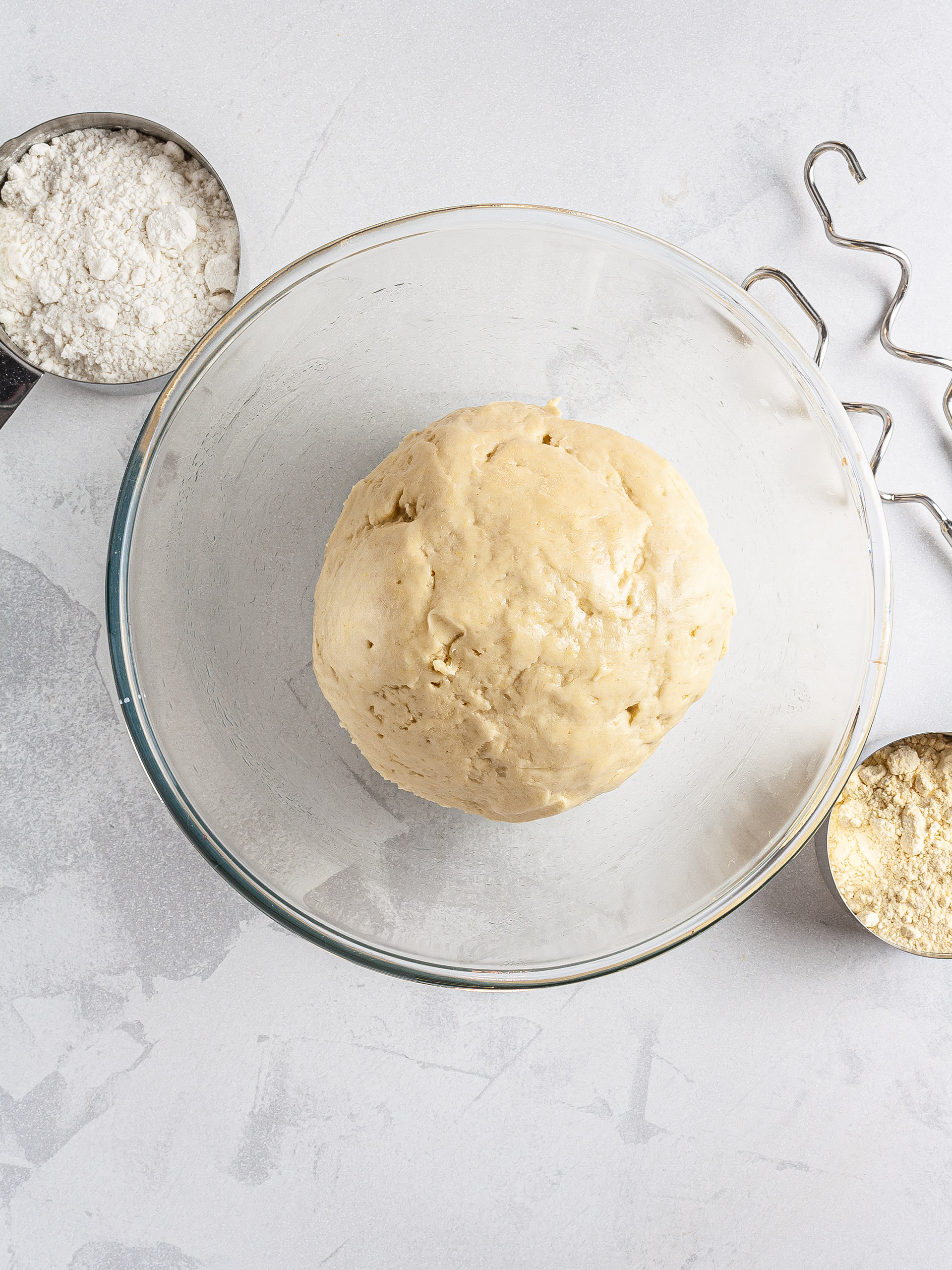
Step 2
Wrap the bowl in cling film and leave the croissant dough to prove for 1 hour at room temperature.
Then, transfer it to the fridge, and chill for 30 minutes.
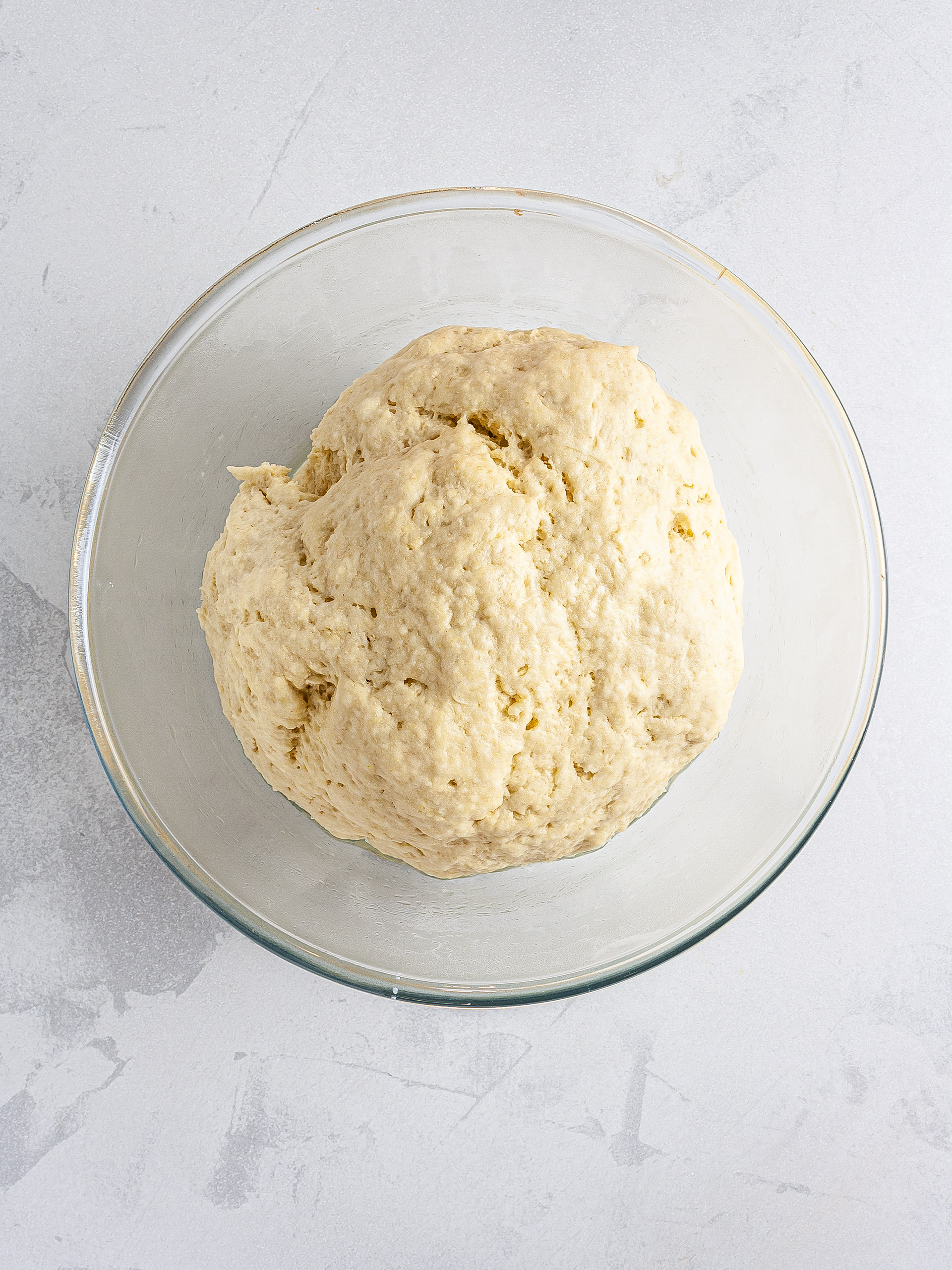
Step 3
In the meantime, leave the vegan butter to soften slightly at room temperature.
When it's pliable enough, roll the block between two sheets of baking paper into a rectangular shape about 20 cm x 15 cm (8 x 6 inches) and 5 mm thick.
Then, keep it in the fridge to chill and harden.
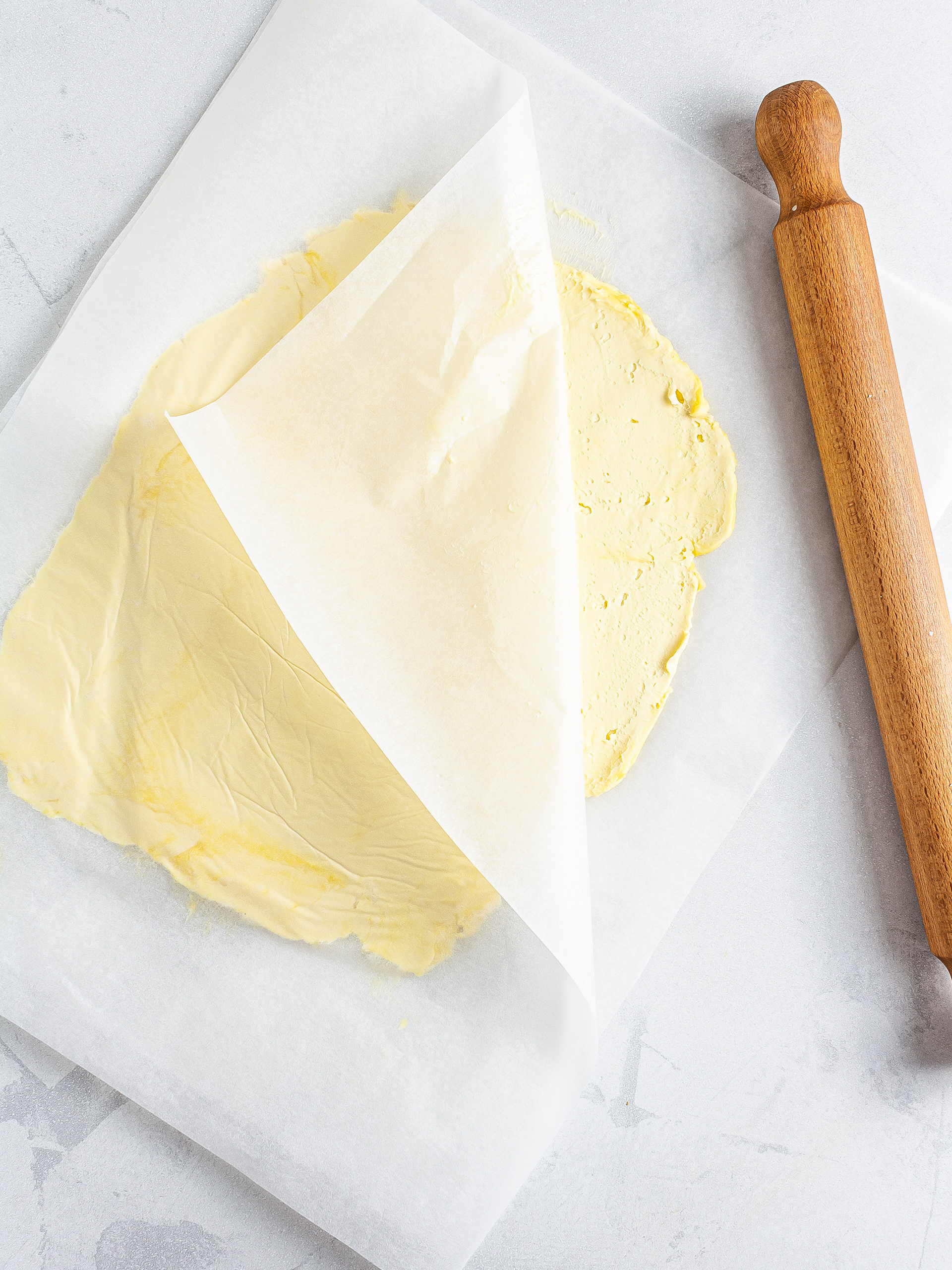
Step 4
With a rolling pin, roll out the croissant dough between two sheets of parchment paper to a large rectangular shape, about 40 cm x 20 cm (15 x 8 inches) and 3 mm thick.
We recommend dusting both the paper and the dough with a bit of gluten-free flour, as the dough is quite soft and sticky.
Next, transfer the prepared butter sheet, unwrapped, in the centre of the dough, and pack it up like a parcel folding in the dough edges over the spread (1).
Then, fold it in half and slightly roll it out to a long rectangle so that the spread gets pushed between the dough layers (2).
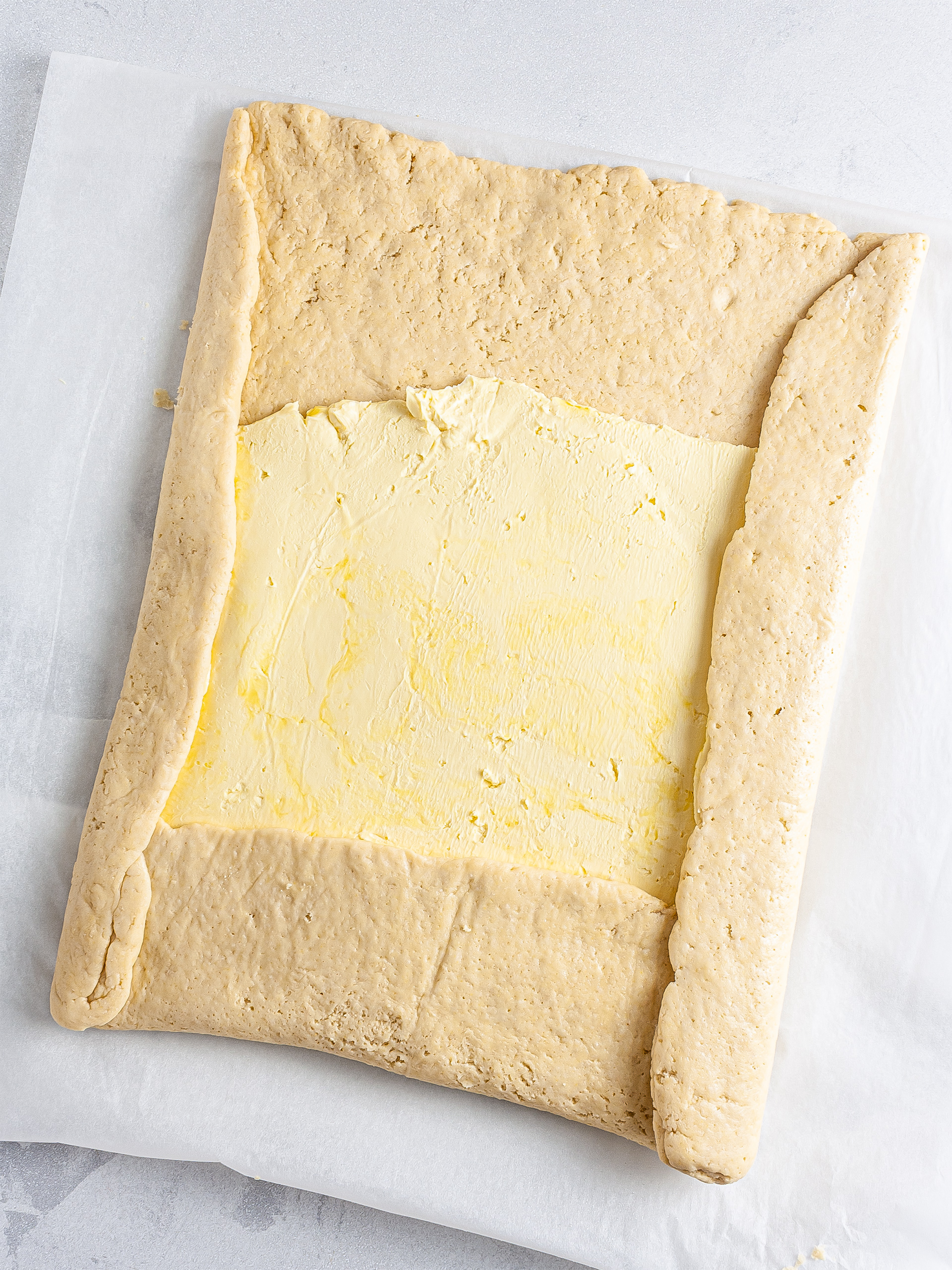
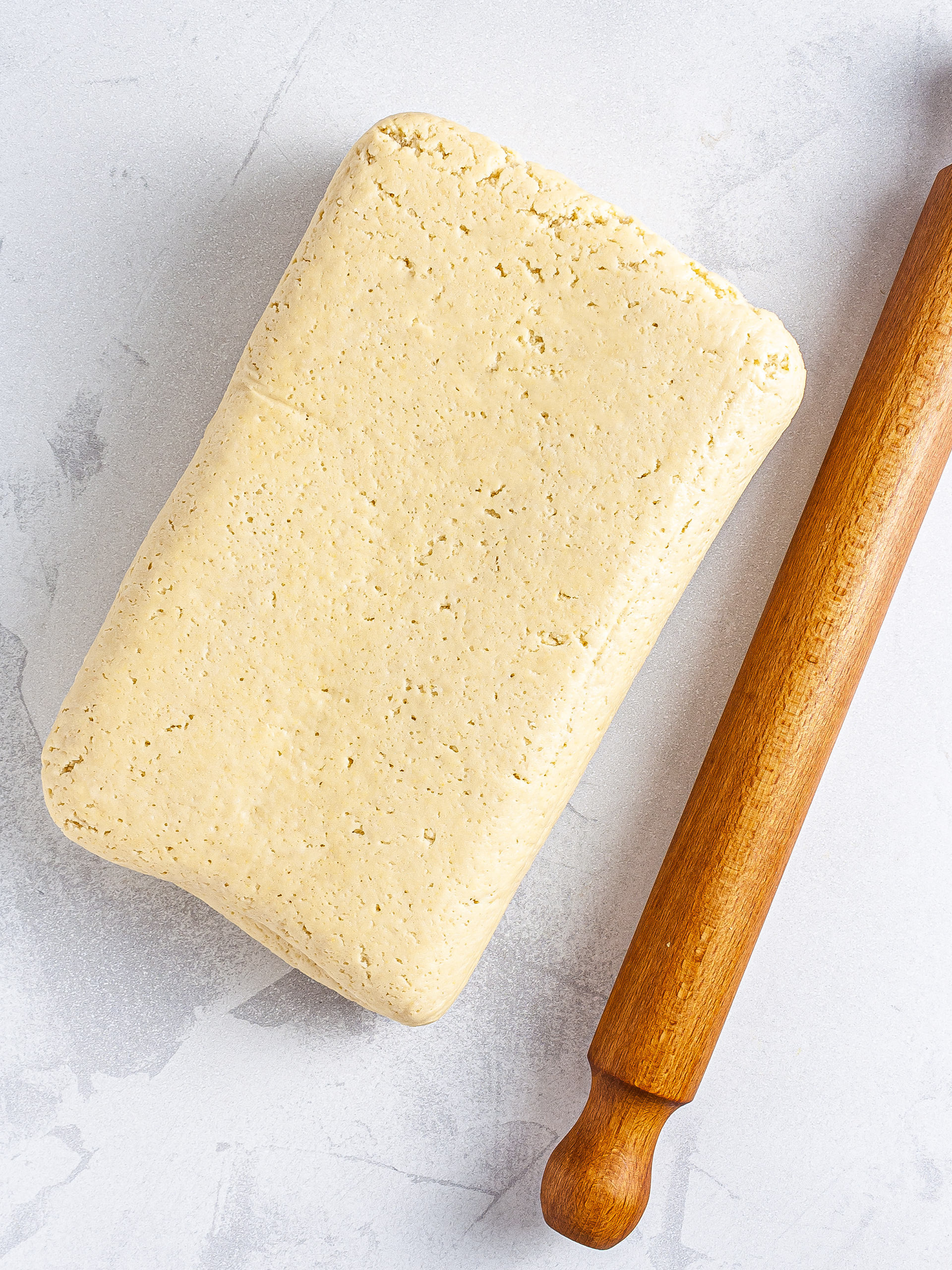
Step 5
Now it's time for the "tri-fold" sequence essential to laminate the dough and butter spread.
To do so, fold the bottom third of the dough rectangle over the centre and then the top third over the folded part, like a letter.
Then, roll out the dough along the long side and transfer it, seam side down, onto a tray lined with parchment paper.
Wrap it in cling film and refrigerate it for 30 minutes.
Repeat this step twice, for a total of three folding sequences.
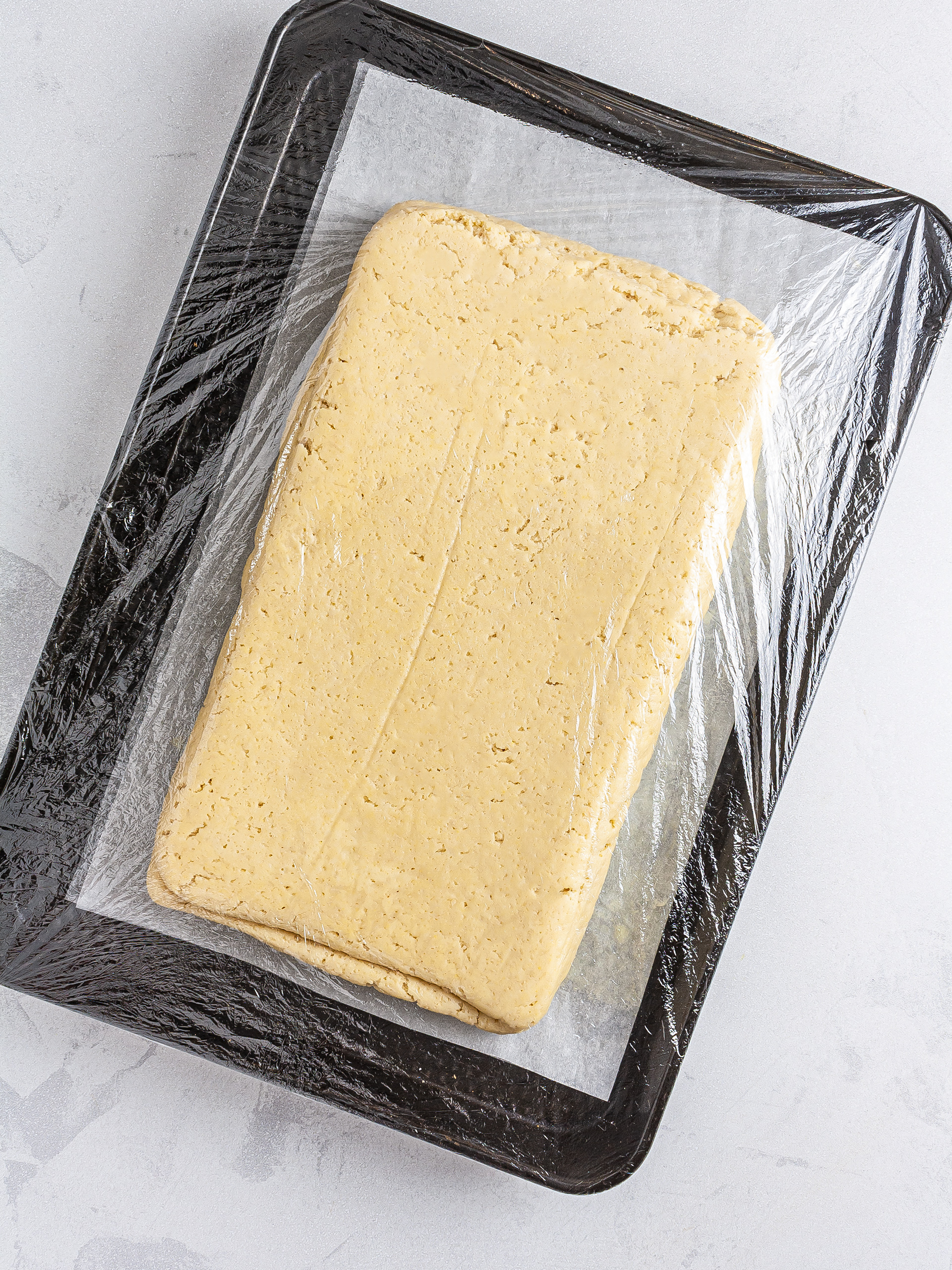
Step 6
Now, roll the dough to a 5mm (1/5 inch) thick rectangle shape.
Cut long triangles about 13cm (5 inches) wide and 28 cm (11 inches) long.
Make a notch at the bottom of each triangle, and, starting from the base, roll the dough tightly towards the tip.
Place each croissant on a baking tray lined with parchment paper, leaving some space in between.
Wrap well in cling film leave to prove for 2 hours in the fridge.

Step 7
Thirty minutes before baking time, take the croissants out of the fridge and brush them with an egg wash, made with 1 beaten egg and one tablespoon of almond milk.
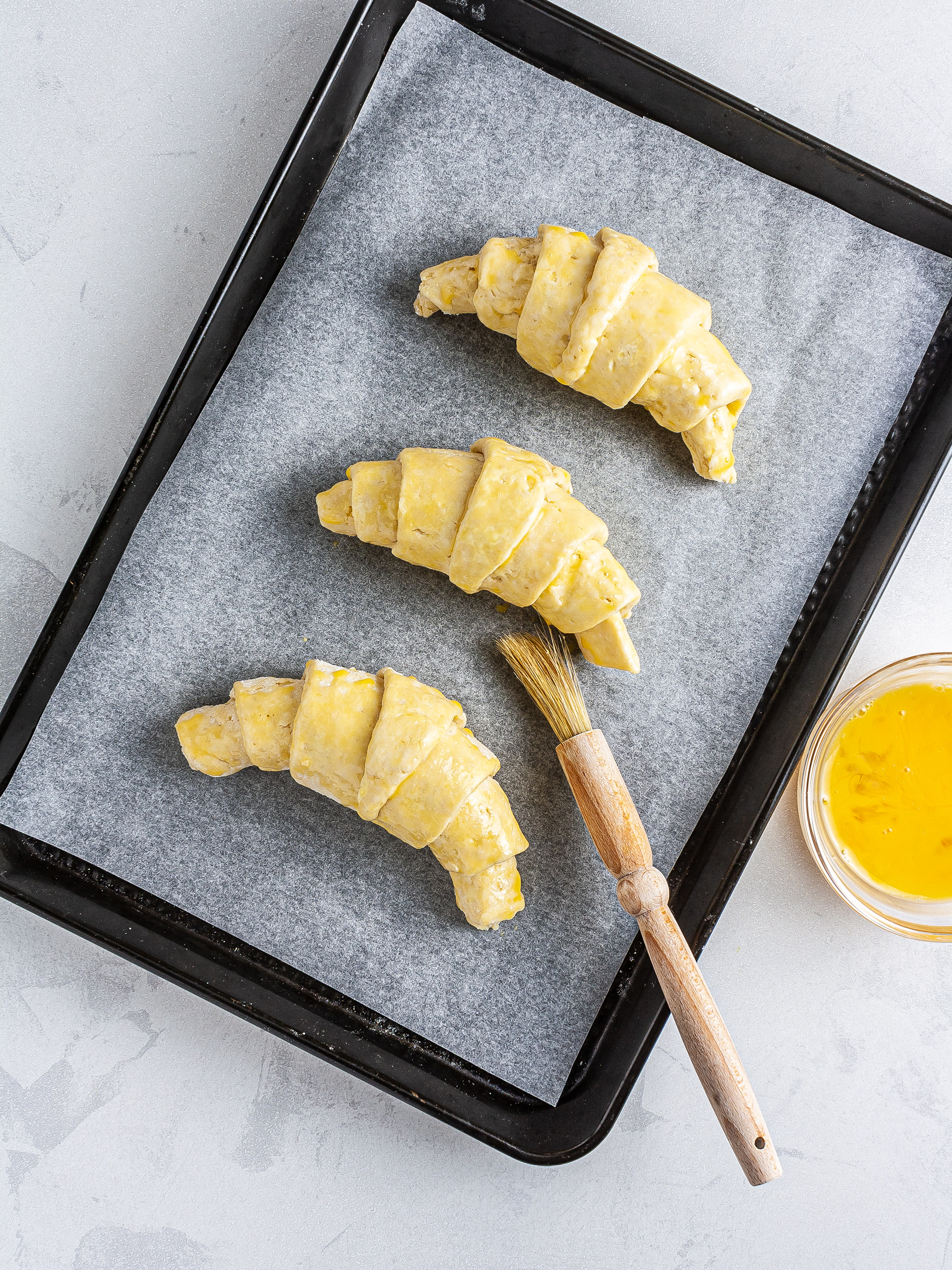
Step 8
Bake the gluten-free croissants for 25 minutes in the preheated oven at 190°C (375°F) in static mode.
Once they look nicely golden, remove the pastries from the oven and leave them to cool down on a wire rack.

Tips
Once ready, you can store your croissants in an air-tight container and consume them within five days. We like to freeze any croissants we don't eat on the same day, and then quickly reheat them in the oven before eating them.
